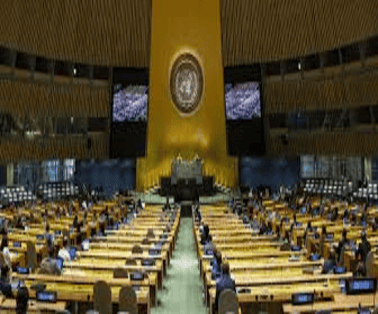Prime Minister Narendra Modi recently unveiled the astronauts for India’s first human spaceflight program — the Gaganyaan Mission. This marks a significant leap in India’s space journey, as the nation prepares to send its first humans to space on an indigenously developed space vehicle.
Meet the Gaganyaan Astronauts
- The four Indian Air Force Officers will be the first Indians to go to space from Indian soil on an indigenous space vehicle.
- The four astronauts are Group Captain Prashanth Balakrishnan, Group Captain Ajith Krishnan, Group Captain Angad Pratap, Wing Commader Shubhanshu Shukla.
- The four astronauts have undergone extensive training at Russia and the program is now underway in India at Isro training facility.
- ISRO and Glavkosmos (a subsidiary of Russian space agency Roscosmos) signed a memorandum of understanding for the training of four astronauts in June 2019.
- The four astronauts trained at Russia’s Yuri Gagarin Cosmonaut Training Centre in February 2020 till March 2021.
What is Gaganyaan Mission
- Gaganyaan mission is a space mission to demonstrate ISRO’s human spaceflight capability by launching a human crew to an orbit of 400 km and bringing them safely back to earth.
- The mission, originally scheduled for a launch by 2022, was delayed due to coronavirus pandemic. The first manned spaceflight is expected to take place in 2024
- The space mission was first announced by Prime Minister Narendra Modi in 2018 in his independence day address to the nation.
- The Gaganyaan spacecraft will be placed in a low earth orbit (LEO)
- The total programme cost is expected to be under Rs.10000 crore.
- ISRO is developing the spacecraft and Russia is helping in the training of the astronauts.
- This mission will make India the fourth country to have sent humans to space.
Phases of Gaganyaan Mission
- Testing Phase: Included Integrated Air Drop Test (IADT) and Pad Abort Test (PAT), crucial for validating safety mechanisms and system performance.
- Unmanned Missions: Technology demonstration and safety verification precede the manned mission, involving advanced tests and flight trials. Vyommitra AI humanoid underwent tests for this mission.
- Manned Mission: Culminates in executing the human spaceflight module of Gaganyaan, following successful unmanned missions.
Gaganyaan Mission Features
- The spacecraft is being developed by the Indian Space Research Organisation (ISRO).
- The spacecraft consists of a service module and a crew module, collectively known as the Orbital Module.
- Crew module – spacecraft carrying human beings and Service module – powered by two liquid propellant engines.
- It will be equipped with emergency escape and emergency mission abort.
- ISRO’s Geosynchronous Satellite Launch Vehicle (GSLV Mk III), the three-stage heavy-lift launch vehicle, will be used to launch Gaganyaan as it has the necessary payload capability.
- The spacecraft will be placed in a low earth orbit of 300-400 km.
- The crew module, in which the three astronauts will leave for space, will be made of 3.7-meter diameter and seven-meter height
- The human spaceflight will take 16 minutes to reach orbit where it will stay for three days.
- For its return, the capsule will take 36 hours, and will land in the Arabian Sea, just off the coast of Gujarat.
International Collaborations for Gaganyaan
- India has managed to bring together countries for its ambitious plans to send humans to space. Russia and France are providing key training and equipment needed to carry out the mission.
- Four Indian Air Force pilots underwent training in Russia with the Russian space agency.
- Apart from imparting training at the Gagarin Cosmonaut Training Center, Zvezda, a Russian company is also manufacturing space suits for Indian astronauts.
- India signed an agreement with the French space agency National Centre for Space Studies (CNES) to provide equipment it has developed for the International Space Station.
- The agency will supply fireproof carry bags made in France to shield equipment from shocks and radiation.
- Under the terms of the agreement, CNES will train India’s flight physicians and CAPCOM mission control teams in France at the CADMOS centre for the development of microgravity applications and space operations at CNES in Toulouse and at the European Astronaut Centre (EAC) in Cologne, Germany
Historical Context of Human Spaceflight
- If one goes deep into the history of manned missions to space, the roots can be traced back to the Cold War era. All of it began with the “space race” between the two superpowers- the U.S. and the USSR. The race began during the late 1950s and then the story went on with different space flights launched at different times.
- Yuri Gagarin of the USSR was the first person to reach space in April 1961. He orbited the Earth in a Vostok spacecraft. Six Vostok capsules in all carried astronauts to space between 1961and 1963. Valentina Tereshkova was the first woman in space who went aboard in the final flight of the capsule.
- The U.S. striving to beat the USSR in the “space race” launched its crew vehicle in Project Mercury. Alan Shepard Jr. became the first American to reach space in May 1961. He was launched aboard a suborbital flight of Freedom 7 capsule
- John Glenn became the first American to orbit the Earth on the Friendship 7 mission in 1962. Six manned space flights were launched between 1961-63 being part of the Mercury project.
- As the missions of that era grew longer, the astronauts became more adept at living within their spacecraft in space. Aleksei Leonov, a Soviet astronaut became the first person to exit an orbiting aircraft in 1965.
- In the final stages of the Cold War “space race”, the U.S. wished to reach the moon and thus launched the Apollo program.
- In 1969, Neil Armstrong and Edwin “Buzz” Aldrin became the first people to reach the moon on the Apollo spacecraft.
- China joined the crewed space race in 2003 by launching the Shenzhou spacecraft. It made China the third country to have the capability to launch humans to orbit
Conclusion
The Gaganyaan Mission is not just a spaceflight — it’s a symbol of India’s growing technological prowess, scientific innovation, and global leadership in space exploration. With Indian astronauts preparing to make history, this mission brings India closer to its long-term vision of deep space exploration and interplanetary missions
To Download Monthly Current Affairs PDF Click here
Click here to get a free demo
Discover all about CLAT Exam



